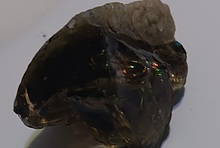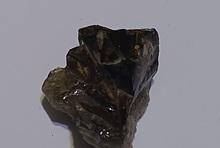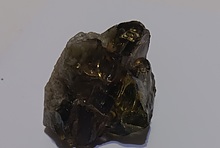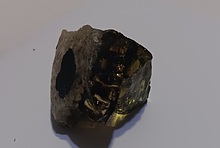Home PageAbout MindatThe Mindat ManualHistory of MindatCopyright StatusWho We AreContact UsAdvertise on Mindat
Donate to MindatCorporate SponsorshipSponsor a PageSponsored PagesMindat AdvertisersAdvertise on Mindat
Learning CenterWhat is a mineral?The most common minerals on earthInformation for EducatorsMindat ArticlesThe ElementsThe Rock H. Currier Digital LibraryGeologic Time
Minerals by PropertiesMinerals by ChemistryAdvanced Locality SearchRandom MineralRandom LocalitySearch by minIDLocalities Near MeSearch ArticlesSearch GlossaryMore Search Options
The Mindat ManualAdd a New PhotoRate PhotosLocality Edit ReportCoordinate Completion ReportAdd Glossary Item
Mining CompaniesStatisticsUsersMineral MuseumsClubs & OrganizationsMineral Shows & EventsThe Mindat DirectoryDevice SettingsThe Mineral Quiz
Photo SearchPhoto GalleriesSearch by ColorNew Photos TodayNew Photos YesterdayMembers' Photo GalleriesPast Photo of the Day GalleryPhotography
╳Discussions
💬 Home🔎 Search📅 LatestGroups
EducationOpen discussion area.Fakes & FraudsOpen discussion area.Field CollectingOpen discussion area.FossilsOpen discussion area.Gems and GemologyOpen discussion area.GeneralOpen discussion area.How to ContributeOpen discussion area.Identity HelpOpen discussion area.Improving Mindat.orgOpen discussion area.LocalitiesOpen discussion area.Lost and Stolen SpecimensOpen discussion area.MarketplaceOpen discussion area.MeteoritesOpen discussion area.Mindat ProductsOpen discussion area.Mineral ExchangesOpen discussion area.Mineral PhotographyOpen discussion area.Mineral ShowsOpen discussion area.Mineralogical ClassificationOpen discussion area.Mineralogy CourseOpen discussion area.MineralsOpen discussion area.Minerals and MuseumsOpen discussion area.PhotosOpen discussion area.Techniques for CollectorsOpen discussion area.The Rock H. Currier Digital LibraryOpen discussion area.UV MineralsOpen discussion area.Recent Images in Discussions
Fakes & Fraudsphosphosiderite cabochons

9th Mar 2010 05:23 UTCRick Dalrymple Expert
http://www.mineralauctions.com/auctions/gemstone-consignment-auction-210-225/phosphosiderite-great-color-12671.html
I know it use to be made from variscite from Lucin, Utah. I have even made some of it myself, bit it has never come out as evenly colored as some of the material from Brazil. It is also disturbing that it is never disclosed that it is completely heat treated.
Does anyone know exactly how to make it turn purple so that the color is so even?
Edit: (spelling)

9th Mar 2010 13:39 UTCAlfredo Petrov Manager
What makes you think it is heat treated? Is there evidence, or just malicious rumor? I would think you couldn't heat treat iron phosphates; they'd turn brown, dark red or black.
(I have no idea whether these violet cabochons are natural phosphosiderite or not - can't tell just by looking at a picture - but I tend to give sellers the benefit of the doubt unless there is some specific reason to think fraud.)

9th Mar 2010 18:28 UTCRick Dalrymple Expert
I first saw these in a jewelry store in southern Utah ( about 5 or 6 years ago) being sold as Utahs Most Unique Gemstone and asked where it came from, being from Utah and a Utah collector. The guy that owned the store told me you just take Lucin, variscite and bake it in a kiln and after a set amount of time you get this beautiful pink phosphosiderite.
Being an experimentallist, I couldn't wait to get home and try it. Sure enough, I cooked probably 20 pounds of variscite experimenting and got it to turn from green to pink around the edges. Just not that consistant pink.
I tried cooking it with a torch and got a more darker lavander. It took about 25 minutes at cherry red before it started to turn.
I have looked long and hard to find this kind of materail in the rough. It is never sold in the rough, only as finished cabs, which makes me think that it is not naturally found that way. Mine turned out very grainy after cooking and all the materail I have always seen for sale seems to be grainy leading me to think all of it has been cooked and then sealed with some kind of stone sealer or epoxy, usually opticon.
Don't think I have anything against a particular dealer. I have purchased from him in the past and will do so again in the future.

9th Mar 2010 19:07 UTCAlfredo Petrov Manager
I guess the first step would be to get one of these cabs and check whether it's really phosphosiderite or not. If it turns out to be really Al-phosphate, with minor Fe, then it can't be phosphosiderite, and then likely either cooked Utah variscite or something synthetic. If it is really phosphosiderite as advertized, then I'd suspect some as yet unknown Brazil source for massive material - The colour is right.

9th Mar 2010 19:45 UTCRick Dalrymple Expert

9th Mar 2010 19:55 UTCRick Dalrymple Expert
That's a good idea. I should have some analysed but that is beyond my capability right now.
I find it hard to believe that there would be some secret location that no one knows about except a few people who are selling the cabs. They are beautiful in color and I would suspect they would be in high demand with jewelers. If there was only one secret spot I would figure the price to be considerably more. Just a rambling thought.

9th Mar 2010 20:12 UTCAlfredo Petrov Manager
9th Mar 2010 20:49 UTCSteve Hardinger 🌟 Expert

9th Mar 2010 21:43 UTCHenry Barwood

9th Mar 2010 21:48 UTCRick Dalrymple Expert
By what you are saying I was creating rodondite and not phosphosiderite?

9th Mar 2010 21:51 UTCRick Dalrymple Expert
I am not calling into question his reputation. It would be foolish to think he doesn't know what he is doing. But, as a mineral dealer myself, I also know it is impossible to know everything. I have made mistakes in the past as I am sure every mineral dealer and collector has. I am just calling into question the validity of this one item. I have been suspicious of it since I first saw it 5 or 6 years ago. I purchased it in an attempt to figure out what it was. I have not seen any of it on the market since then, until recently. Now I have seen it several times and always listed from a different place.
Like I said before, I was able to get some results in making it from variscite. I personnally think it is manufactured.
9th Mar 2010 23:41 UTCSteve Hardinger 🌟 Expert

10th Mar 2010 00:30 UTCRick Dalrymple Expert
No problem. I didn't really mean to stir up a big deal with this. I was hoping to find more information about how the process works for "baking" variscite into what they are calling phosphosiderite. My own experiments were not as successful as I had hoped. And as Henry pointed out I wasn't even converting variscite to phosphosiderite, it was redondite.
It seams I can always find someone on Mindat that can answer my questions about such things.

10th Mar 2010 03:29 UTCRobert Lavinsky Expert

10th Mar 2010 03:45 UTCHenry Barwood
Actually "redondite" is strengite with a small aluminum content. It was from guano deposits on the island of Redondo in the Carribean. The Utah variscite, at least those I've analyzed, were all either variscite or crandallite.
I'm not saying that is a synthetic, just that it is very easy to precipitate phosphosiderite and turquoise powder. A little pressure and some epoxy and you have beautiful cutting material.
Henry

10th Mar 2010 04:50 UTCRick Dalrymple Expert
I apologize for any hassle this has caused you. I have nothing but the utmost respect for you. I enjoy your actions, even though I don't seam to be able to win to many of them.
I was not trying to say it should or should not be sold. I was just inquiring as to how it was produced. It is a unique colored gem material that makes beautiful jewelry in both silver and gold.
Henry,
How did you go about go about dehydrating the variscite? How long at what temperature did you use?
Once again, I was not trying to point a finger at anyone for anything.

10th Mar 2010 13:39 UTCHenry Barwood
I used to run a lot of thermogravimetric analyses. The technique can be used to determine the LOI and the thermal characteristics of a sample. Hydrated phosphates have different thermal curves that allow you to identify, and in many cases, quantify them. You have to be a bit careful with materials that contain Fe2+ because it will oxidize and cause a weight gain.

7th Dec 2010 21:17 UTCNuevo Mundo
I have had the opportunity to see for myself a good quantity of phosphosiderite rough. The material I saw was NOT stabilized or treated in any way, and the rough was mostly nodules that looked convincingly natural. i saw pieces or rough from under 2" to over 2' in diameter, and there was nothing to indicate that they were artificial or treated in any respect.
I think I have a photo of a few dozen kilos of untreated rough. If there is interest I will search for it when I get back to my home computer and post it here.

8th Dec 2010 02:39 UTCRick Dalrymple Expert
Thanks for your information. I appreciate the eye witness account. I would love to see the photos of the rough and where I can purchase some.
I was originally told by a local jeweler they baked the variscite from Lucin, Utah to turn it into phosphosiderite. I used a torch to heat it to cherry red for over 30 minutes and was able to get a violet color not quite the same as the phosphosiderite cabs. So I assumed they had a better process than I did.
This jeweler insisted this was a Utah material. I see now that it was just for my benefit.

8th Dec 2010 03:58 UTCNuevo Mundo
I don't think there is any way pieces of that size could be effectively heat treated.

8th Dec 2010 04:11 UTCAlfredo Petrov Manager
I'm not saying they're heat treated, but I'm curious why size would indicate anything about the likelihood of such heat treatment? if I wanted to experiment with heat treatments, I'm sure my friendly local brick factory or ceramic artist would let me put pieces much bigger than that into their ovens for a day or several days, and see what comes out.

8th Dec 2010 04:26 UTCHenry Barwood
Is there a locality associated with this material?

8th Dec 2010 04:32 UTCNuevo Mundo
I still think that heat treating things with so much variation in shape and size would not be easy.

8th Dec 2010 04:36 UTCNuevo Mundo
The most precise locality I could get was that it comes from 'Chile'. It is perfectly possible that it is in fact from Chile, but I think it is also possible that the actual origin is somewhere in Bolivia or Peru. As with any new material, no one wants to give me any details...

9th Dec 2010 02:36 UTCLuiz Alberto Dias Menezes, Fo.
It is very hard to identify phosphosiderite without any analysis; Aaron, have you had your rough material X-rayed?

9th Dec 2010 03:26 UTCNuevo Mundo

13th Dec 2010 19:31 UTCMichael Hatskel
Dana 7th Ed. says "On slight heating the color of green variscite may become lavender to purplish-red" and makes a reference to the 1912 publications by Schaller (see pp. 759 and 761 in Vol. 2).
It doesn't mean, of course, that it turns into phosphosiderite, because Al is not going anywhere upon heating. But it seems that some Fe shall be present to get such a color.
Also, some of the chemical compositions provided by Dana show minor Cr (e.g. 0.18% Cr2O3 for the Lucin variscite). Could that be enough for the Cr to contribute as a purple-pink chromophore?
Not sure what is the actual temperature of the "slight heating" - below the dehydration point or above it.

19th Dec 2010 16:02 UTCRay Ladbury
I do have samples of phosphosiderite associated with red variscite that I brought back from Brazil a few years ago. Both the variscite AND the phosphosiderite are in tiny crystals, and I haven't seen much larger for either species, even in high-end specimens.
Don't know if that helps, but that is what I know.

11th Jan 2013 20:42 UTCLyle Gordon
I was going to buy some cabochons on e-bay and do XRD. But, if someone has some I would be happy to grind up a coupld and do XRD and post the results and then use the powder for my experiments.
Thanks very much,
Lyle

11th Jan 2013 23:23 UTCRicardo Scholz
this phosphosiderite probably is from Copiapo, Chile.
Best wishes,
Ricardo

11th Jan 2013 23:56 UTCAlfredo Petrov Manager

12th Jan 2013 01:42 UTCRick Dalrymple Expert
I am still waiting for a definitive answer and location;-)
Thanks all for your imput.

9th Feb 2013 18:27 UTCLyle Gordon
Here are the plots of the data for anyone that is interested:
https://dl.dropbox.com/u/3730003/phosphosiderite/XRD.png
https://dl.dropbox.com/u/3730003/phosphosiderite/PXANES.png
https://dl.dropbox.com/u/3730003/phosphosiderite/FeEXAFSk.png
https://dl.dropbox.com/u/3730003/phosphosiderite/FeEXAFSr.png
and here is the raw XRD data if anyone wants to play with it:
https://dl.dropbox.com/u/3730003/phosphosiderite/petrov%20phosphosiderite.txt
https://dl.dropbox.com/u/3730003/phosphosiderite/phosphosiderite%20cabochon.txt

9th Feb 2013 18:49 UTCLyle Gordon
https://dl.dropbox.com/u/3730003/phosphosiderite/FeXANES.png

9th Feb 2013 19:49 UTCTim Jokela Jr

18th Mar 2014 21:28 UTCNeil
I know it's a year later but I also have an interest in this material. I have a rough piece that I bought on eBay that looks like the rough photo posted above.
http://www.zbestvalue.com/images20/phosphosiderite1.jpg
Supposedly the material comes from Argentina or Chile but I can't confirm this. What I do know is that the specific gravity is incorrect for phosphosiderite. According to all the sources I can find on the internet the specific gravity should be 2.74-2.76. But I measured my sample multiple times and the specific gravity is 2.36.
Which is odd because this is closer to the specific gravity of variscite.
Could you do a specific gravity and refractive index measurement of your sample?
Neil

27th Nov 2014 23:52 UTCandres uteau
NO SELLING ALLOWED !
Your messages have been removed.
Wayne Corwin




Mindat.org is an outreach project of the Hudson Institute of Mineralogy, a 501(c)(3) not-for-profit organization.
Copyright © mindat.org and the Hudson Institute of Mineralogy 1993-2024, except where stated. Most political location boundaries are © OpenStreetMap contributors. Mindat.org relies on the contributions of thousands of members and supporters. Founded in 2000 by Jolyon Ralph.
Privacy Policy - Terms & Conditions - Contact Us / DMCA issues - Report a bug/vulnerability Current server date and time: April 19, 2024 13:50:15
Copyright © mindat.org and the Hudson Institute of Mineralogy 1993-2024, except where stated. Most political location boundaries are © OpenStreetMap contributors. Mindat.org relies on the contributions of thousands of members and supporters. Founded in 2000 by Jolyon Ralph.
Privacy Policy - Terms & Conditions - Contact Us / DMCA issues - Report a bug/vulnerability Current server date and time: April 19, 2024 13:50:15










